Does peanut butter cause acne? I analyze the research in this write-up. If you’ve read our article about how carbs cause acne or why the ketogenic diet is one of the best diets for clear skin, you might think that peanuts, and more importantly, peanut butter, is safe for acne-prone skin.
Just like other nuts, peanuts are probably loaded with healthy fats that’ll prevent insulin-driven hormonal acne, right?
Surprisingly, the answer is no.
In fact, research shows that peanuts are one of the worst foods you could eat for acne-prone skin.
Unlike other nuts and seeds, peanuts are in a dangerous category of their own when it comes to clear skin. Peanuts, unlike other nuts, are technically a legume, much closer to beans or lentils in nutritional make-up than they are most other nuts.
In short, peanuts, and even some peanut butter, trigger all three of the root causes of acne: inflammation, digestive issues, and insulin-driven hormonal acne.
Let’s take a deep dive into this dangerous acne-causing food and why, whenever possible, you should opt for a healthier alternative like macadamia nuts or almonds.
1. Peanuts are high in acne-causing omega-6 fatty acids
Your balance of omega fatty acids is a key factor in inflammatory acne.
In the eBook included in the GoodGlow Clear Skin Resource Kit, we discuss inflammatory acne in-depth, but I’ll do a quick summary of it here and the nutritional factors that influence it…
There are two main types of omega fatty acids that influence inflammation:
- Omega-3: anti-inflammatory, great for preventing acne
- Omega-6: pro-inflammatory, too much is bad for acne
A diet high in omega-6 fatty acids and low in omega-3 fatty acids can lead to chronic inflammation1https://www.ncbi.nlm.nih.gov/pubmed/29610056, a condition where your immune system becomes overactive and ends up treating every little acne infection like a huge threat. The end result? Redness, swelling, and protrusion – a pimple!
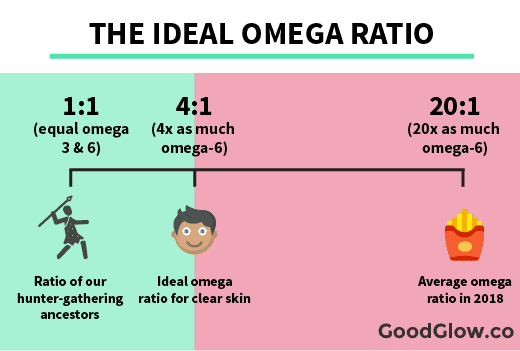
Inflammation is behind all acne.
If an inflammatory response isn’t triggered, an acne infection does not turn into a pimple – in fact, acne infections are relatively harmless, routine skin infections. It’s only when inflammation takes over that this acne infection takes the form of acne as we see it – and guess what?
Peanut butter and peanuts are loaded with inflammation-causing omega-6 fatty acids:
- One ounce (a small bag) of peanuts has 4.4g of omega-6 fatty acids
- One tablespoon of peanut butter contains 2.5g of omega-6 fatty acids
To put it into perspective, you’d have to eat over a half-pound of macadamia nuts, close to 2,000 calories, to get the same amount of omega-6s.
This makes peanuts extremely hard to stomach if you struggle with inflammatory acne, even in moderation.
2. Peanuts and peanut butter have dangerous lectins that cause digestive-driven acne
A properly functioning digestive system is absolutely crucial for acne, and another one of the root causes we discuss in the eBook.
Being able to a wide variety of foods is one of the most important factors in whether or not you’ll break out after eating certain meals. If you can’t tolerate certain foods that you regularly eat, your body will actually begin to trigger an inflammatory response every time you eat certain foods.
There are several things that influence which foods you can tolerate and which ones you can’t. Generally speaking, it comes down to three factors: the gut microbiome, genetics (allergies), and intestinal permeability.
In the case of peanuts and peanut butter, we’re interested in this last aspect – intestinal permeability.
It all comes down to the lectins found in peanuts and peanut butter.
Lectins are compounds that plants use to protect themselves. Just like animals, plants develop natural methods of protection to avoid getting eaten. Unlike animals, plants can run, jump, or swim away from their predators, so they develop antinutrients, like lectins.
Lectins cause acne by damaging the gut. Our body isn’t able to break down lectins. After ingesting them, they travel through the digestive system fully intact until they reach the intestine. There, they can weaken and damage the lining of the intestine. Eventually, if the intestine is weak enough, these lectins and other compounds can pass through the wall and trigger inflammation, and with it, inflammatory acne.
Most plants contain lectins, and many of them are no big deal. Cooking, soaking, or sprouting will usually get rid of them, or, in the case of many fruits and vegetables, these lectins are either relatively easy to digest or in small quantities.
This is not the case with peanuts – the primary lectin found in peanuts, peanut agglutinin, is extremely similar to gluten, an extremely dangerous lectin found in wheat.
Peanut agglutinin is one of the most damaging and resilient lectins out there – it enters the digestive tract, damages the intestinal wall, and leads to digestive-driven inflammation every time you eat particular foods.
Worse yet, peanut agglutinin is among the most allergenic lectins out there (which is why so many people are allergic to peanuts). Food sensitivities and allergies can also trigger inflammatory acne.
The end result is that peanut lectins are much more like to damage your gut and immune system than other legumes – this applies to both peanuts and peanut butter.
3. Peanuts are usually roasted in acne-causing vegetable oils
Unfortunately, those freshly roasted peanuts you’re chowing down on probably have a double dose of inflammatory omega-6s.
Unless you’re eating raw or dry-roasted peanuts, they’re usually fried in vegetable oils, like soybean, sunflower, or canola oil.
These oils are extremely high in omega-6 fatty acids, and very sensitive to heat. A single tablespoon of soybean, sunflower, or canola oil has several times the amount of daily recommended omega-6 fatty acids.
This combination makes roasted peanuts even more likely to cause inflammatory acne.
4. Peanut butter usually contains acne-causing additives
Peanut butter isn’t any healthier or safer for your skin than peanuts.
The key ingredient in any peanut butter is still, you guessed it, peanuts. So just like regular peanuts, peanut butter is high in inflammatory fats and lectins that cause acne.
On top of that, most peanut butter you’ll find at a store contains molasses or sugar, which can trigger a cascade of acne-causing hormones.
Essentially, the sugar found in sweetened peanut butter leads to an increase in insulin, a hormone that also triggers the release of several other compounds, including IGF-1, IGFBP-3, and IL-1, all of which combine to be an acne-causing nightmare:
- IGF-1 increases sebum oil production, which clogs pores
- IGFBP-3 leads to an increase in skin cell production, further blocking pores
- IL-1 increases inflammation, contributing to red, angry, protruding pimples
Peanut butter is also loaded with hydrogenated vegetable oils, like rapeseed and soybean oil. These vegetable oils have extremely high amounts of inflammatory omega-6 fatty acids. Peanut butter without these oils is extremely pro-inflammatory, so once you add these oils you’re getting a double dose.
There are better peanut butter options out there, but overall it’s safer to go with something like natural almond butter.
The GoodGlow Shopping Guide contains a full list of vegetable oils and additives for clear skin.
Better Alternatives
Overall, peanuts and peanut butter are pretty bad foods to eat when it comes to acne. Unfortunately, many nuts are just as high, or sometimes even higher in inflammation-causing omega-6 fatty acids.
Dry roasted or raw almonds and almond butter is usually a better choice – almonds are high in skin-clearing vitamin E and prebiotics, but still has its fair share of omega-6. Allergies to almonds are also pretty common.
Overall, your best bet for replacing peanuts and peanut butter with an acne-friendly alternative is macadamia nuts, and homemade macadamia butter.
For a full breakdown, see Clear Skin Food and Drink Database for better alternatives to peanuts, or check out our one-page Diet Blueprint.
Summary
All-and-all, peanuts and peanut butter are problematic for acne for a few reasons:
- They’re high in inflammatory omega-6 fatty acids
- They’re roasted in highly inflammatory vegetable oils
- They have resilient antinutrients, called lectins, which can damage the gut and lead to inflammatory acne
- Peanut butter usually contains added sugar
There are healthier, better options when it comes to nuts, including macadamias, almonds, hazelnuts, and chestnuts.
PS: In the Clear Skin Food & Drink Database included in the GoodGlow Clear Skin Resource Kit, we have a full list of nuts and seeds ranked for clear skin. For a limited time, you can get access for over 50% off.
Frequently Asked Questions
If you have acne you should eat nut butters that are not high in Omega-6, such as almond butter and cashew butter. Peanut butter is high in Omega-6 fatty acids which is pro-inflammatory and could cause acne or make it worse.
Peanuts, as well as other nuts like Brazil nuts and almonds, contain vitamin E and selenium. People with acne are usually low in these antioxidants, therefore peanuts can be good for people suffering from acne and protect their skin cells.
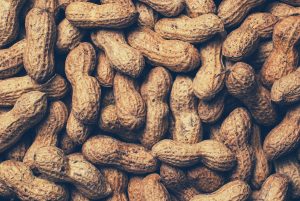
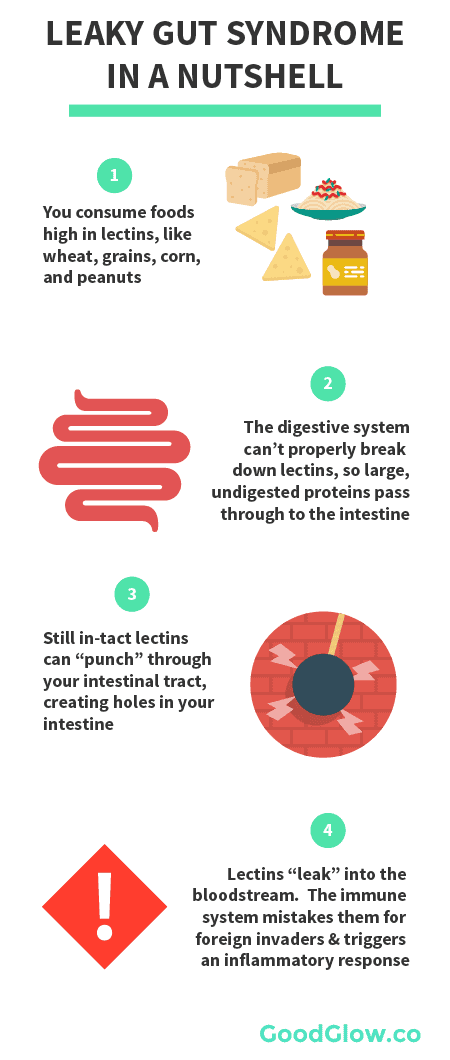

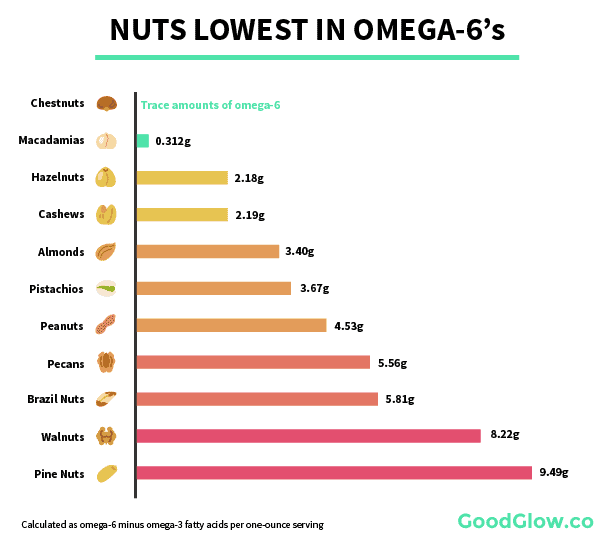
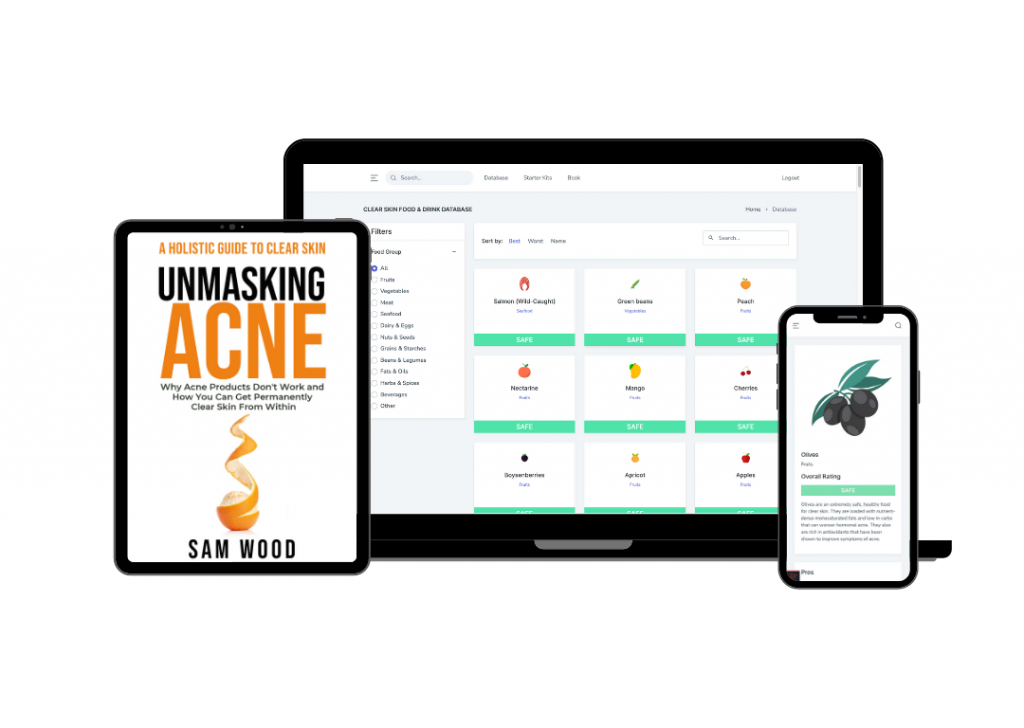
I have not been eating peanuts since less than 3 days ago.
I always had mild acne but it was something that was somewhat under control. Recently my acne flared up so bad my face feels like I’m touching brail. Along the same time this happened I ate good amount (small jar) of processed peanuts for 3-days straight. My skin felt so bad right after that and was constantly itchy. I would get 7-8 pimples at night.
It’s been 10 days since, my skin isn’t looking too great but I don’t have that feeling that my face is on fire anymore. I am still getting new acne but the rate of it is a little slower per night.
I know I ate a good amount of peanuts but can an acne flare up happen that quickly after eating trigger foods? Also do you know long does it take for your body to heal from this? I have been stacking omega-3 food each day hoping to balance my system.
Hey Steve, I normally notice breakouts about 5-7 days after eating an acne triggering food. I have been trying to sneak peanut butter into my diet because it is so delicious with apple slices but each time I experience a breakout afterwards. It turns out that 2 tablespoons of peanut butter have 16 grams of fat which causes our liver to stop detoxifying toxins because it has to process the peanut butter. I have been incorporating celery juice, zinc, and natural vitamin c (not ascorbic acid) in my diet everyday while avoiding eggs, dairy, and gluten, and my skin looks better than it has ever looked in 7 years!